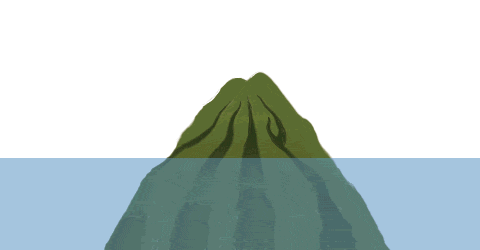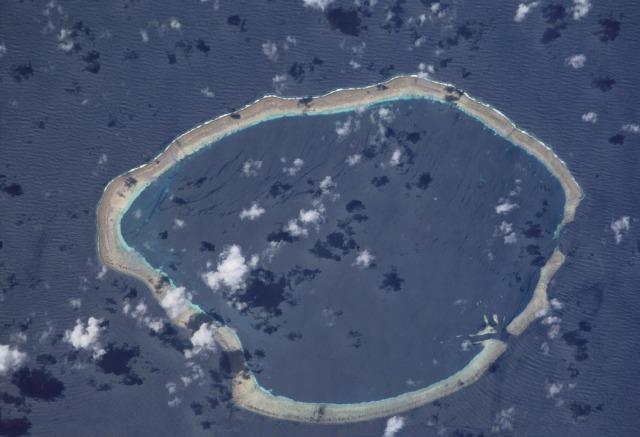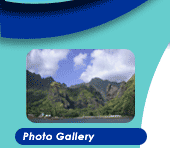February 29, 2007
San Diego, California
The Enlightened Environmentalist
by Lois Joy
Introduction
For our first five voyages, the FAQs (most frequently asked questions) were always, “What was your favorite place?” I finally figured out a good way to answer this typical question asked of most travelers by writing a story, My Favorite Place, which was published in the cruising magazine, Latitudes and Attitudes.
This year, back in San Diego after our Voyage Six, the FAQ has changed. Now the question is “What signs of global warming did you see?” When I respond that I’ve seen many signs of man-made destruction of the environment, but none related to man-made global warming per se, I am met with raised eyebrows.
There is no doubt that trans-ocean sailors are environmentalists. They have to be. On a cruising yacht, we sailors run our own self-sufficient municipality. We generate our own electricity from solar panels and charged batteries, we use a water-maker to convert sea water into fresh, and when we can, we propel our crafts with wind rather than diesel. We yachties consume local produce that is in season, fish the oceans for meat, and produce very little waste, which we carry on board until it can be carefully disposed. It is easy to transition from sailing to “thinking green.”
I returned from seven years of sailing around the world with first-hand knowledge of the environment and a global perspective. Even so, this doesn’t necessarily mean that I will jump, headfirst, into those risky shoals called Man-Made Global Warming.
Stop! Let’s heave to and reason together. I see dangerous currents ahead if everyone just goes with the flow. When proposing solutions for environmental problems, let’s separate what makes sense from what is just talk. Let’s take a critical look at those solutions that just may be driven by the desire for personal fame and achievement, political game-making and vote-getting, and wealth generation for the new green-tech industry.
We sailors are an independent lot, known for thinking and acting for ourselves. After all, on whom else does one depend when he or she is 1000 miles from the nearest marina or port, and something on the yacht breaks down?
I returned home from sailing over 36,000 miles, visiting 62 countries, with a different set of eyes and a new vision. Gunter and I have anchored off the bays, islands, and ports of these countries—living with its citizens for the past seven years. We have bargained with them in their markets. We have enjoyed their food and experienced their heartfelt hospitality. And we have listened to their problems and shared in their dreams.
I have talked with simple islanders as well as government officials, and I find that no solutions are easy. In the name of environmentalism, it does zero good to simply gloss over the day-to-day problems most locals face—just to survive. On the other hand, concerned people around the world are finding creative ways of protecting and saving our wonderful world for future generations. This journal entry is just the beginning of what I trust will be a long-term discussion in the BLOG that will continue far beyond our final Voyage Seven.
Part I: The Formation of a Coral Atoll
I am beginning our discussion with one set of problems with which we as cruisers are intimately familiar: the destruction of our world’s coral reefs. If you have sailed very long around the tropical islands, your vessel may have had one too many close encounters with coral reefs! But if you have had the pleasure of snorkeling or diving the world’s pristine reefs, you know first-hand how wonderful and special they are.
Coral reefs are the rainforests of the ocean. Yet 10% of our reefs are already destroyed and this destruction is continuing at an alarming rate.
Mankind is dependent on reefs for:
- Food. Reefs are home to ¼ of all marine plants and animals; collapse of reef ecosystems could mean famine to those in coastal countries. Reef fish and mollusks feed between 30 and 40 million people every year.
- Medicines: Reefs are a center of biodiversity, a great reservoir of intriguing DNA we have only begun to explore. For example, Neurex Corporation in Menlo Park, CA has developed a pain-killing drug that is hundreds of times more potent than morphine. It is obtained from the poison of reef-dwelling snails.
- Fun and profit. Reefs are one big underwater amusement park for snorkelers and divers and also provide small fish for aquariums.
- Shelter. Reefs are natural harbors take millennia to build; they protect against tides, storm surges, and hurricanes and act as giant sand factories to keep shorelines from eroding. The reefs buffer against wave and tidal action, and so their degradation may increase an island's level of exposure to those forces.
With the publicity this past year about rising sea levels and sinking coral atolls, it became clear to me that the role of reefs in protecting islands is not well understood. So before continuing, here’s a little geology lesson:

"This animation from NOAA shows the dynamic process of how a coral atoll forms. Corals (represented in tan and purple) begin to settle and grow around an oceanic island forming a fringing reef. It can take as long as 10,000 years for a fringing reef to form. Over the next 100,000 years, if conditions are favorable, the reef will continue to expand. As the reef expands, the interior island usually begins to subside and the fringing reef turns into a barrier reef. When the island completely subsides beneath the water leaving a ring of growing coral with an open lagoon in its center, it is called an atoll. The process of atoll formation may take as long as 30,000,000 years to occur."NOAA
Fringing reefs that surround an island are sometimes referred to as house reefs. These are the reefs that islanders depend on not only for food, but for protection. They protect coasts from strong currents and waves by slowing down the water before it gets to the shore. They are also called barrier reefs because they provide a barrier between the ocean and the shore. Fares are outlying low reefs that provide a second layer of protection for tropical islands.
Given these scientific explanations, why is it that media reports claim that rising sea waters due to global warming are flooding the tropical islands of the South Pacific and the Indian Ocean? And why are viewers buying into these heart-rending media stories—no questions asked? Gunter and I first saw the ABC (Australian Broadcasting Corp) TV special called That Sinking Feeling last June when we completed our Voyage Six, living in an apartment at Marmaris Yacht-Marine while Pacific Bliss was being readied “on the hard.”

Carteret Atoll as seen from space, Courtesy NASA
Part II: That Sinking Feeling
This documentary is the story of the Melanesian Carteret islanders, touted as the first global warming refugees. The entire island will be forced to evacuate over the next 10 years, relocated to Bougainville, Papua New Guinea. We watched the islanders boarding their own “evacuation boat.” “Scientists usually measure rises in millimeters and centimeters” reports ABC. “But on the Carterets, the tides are growing at a phenomenal rate.” Fallen coconut trees litter the beaches everywhere, their roots swamped by high tides. Water also seeps from beneath the sand into the gardens of villagers. “It’s become impossible to grow traditional crops like banana, taro and breadfruit” reports Steve Marshall, journalist who tells the sorry story. “The islanders have to get by on a monotonous diet of coconut and fish.” Villagers have built seawalls from clam shells to try to stop the invasive tides, but they’re breached each day. It’s estimated that by 2015, the Carterets will be no more.
Gunter turned from the TV towards me. “How can the sea rise in just that one island? One would think that all seas in all the surrounding Melanesian islands would be rising at the same rate. In fact, the seas bordering Papua New Guinea, a few hours’ sail from there, would also be rising.” Gunter has a doctorate in physics and knows these things, but even to me, it didn’t make sense.
Back home in San Diego, I viewed another TV special, conveniently aired by CNN soon after Al Gore received the Nobel Peace Prize. It is a take-off on the same story. “There’s a lot of reluctance to move, especially the old islanders are resisting,” the reporter concludes. “Bougainville’s civil upheavals might have settled, but the islanders are still worried about law and order.” A local is interviewed: “Salina Netoi is melancholy about trading peaceful island life for the chaos of the big-smoke. ‘I’ll really miss the place, the sea, the coconuts. I do belong to the island, I feel sorry for my sinking island.’”
But what is not reported is the back-story: (1) The Carteret islands consist of a base of coral that sits atop an extinct volcanic mount. In the usual geological course of events first proposed by Charles Darwin, such islands eventually subside due to weathering and erosion, as well as isostatic adjustments of the sea floor. An atoll WILL gradually sink; the sea doesn’t rise. And if the sea DID rise due to global warming, it would rise evenly throughout the entire Pacific Ocean. The entire Melanesian island chain would be seeing a rise of the same level—measured in millimeters or centimeters—just as the scientists said. (2) These islanders may not want to go back to Papua New Guinea, but that IS where most of them came from. For they have already been refugees once. Political refugees, they escaped Bougainville to avoid the fighting there. (3) Along with their wives and children, the men loaded into their small boats packages of dynamite, to get an early start on their food reserves. As they dynamited their fringing reefs to kill the fish and provide quick meals, the underlying coral crumbled. A fissure was most likely formed in the reef, because eventually the one reef became two. The incoming tidal waves now breach the reefs, gradually eroding the shoreline, swamping the islander’s beloved banana and vegetable gardens. A man-made problem? You bet. But it is one problem not caused by global warming. References It sad that islanders who are confronted by a very serious problem appear to have been exploited by the “cause” of global warming.
Part III: The Destruction of Coral Reefs in the Maldives
I have not personally visited the Carterets, but we have anchored near many Pacific and Indian Ocean atolls. By far the largest destruction of reefs we encountered personally was in the Maldives in February of 2007. On the island of Uligan, we visited an entire village built of coral.
Initially, the islanders told us that their fringing reef, on which they had depended for food, had been bleached due to global warming. But as we got to know them, we found out that was not the case. The islanders themselves had killed the reefs in order to mine them for building materials. “We thought it would grow back,” the local English teacher told us, “just as trees grow new leaves.” This story is told in Coral Mining in the Maldives.
Coral Construction. After we returned home, I conducted some further research on the Maldives. What I found on Uligan was only the tip of the iceberg. Coral mining has been going on in the Maldives for at least 400 years.
Coral rock is the main aggregate for most of the construction in the country. According to a report originated by their Fisheries and Aquaculture Department, “In 1986 the demand for coral aggregate for the construction industry in Malé Atoll, the industrial center of the country, was estimated at 0.5 million cubic feet/year. Although no recent estimates have been made, it is thought that demand is probably at its limit now and according to predictions, the current methods of mining would exhaust the coral buildings in N. Malé Atoll within a maximum of 30 years if coral mining is not controlled. There are many problems associated with the current mining practices. Biological surveys of mined sites indicate that the coral diversity and abundance have been decreased dramatically. In addition to this, little recovery was seen at sites intensively mined over 16 years ago.”
The Maldives archipelago (07° 07'N to 00°42'S and 72°33'E to 73° 44'E), consists of about 1200 low-lying islands forming 21 natural atolls and represents one of the largest coral atoll groups of the world. Only 200 or so are inhabited. As cruisers, we were fortunate to visit an island in an atoll group in the far north of the archipelago where we could interact with the locals and understand their culture and lifestyle.
In many cases, uninhabited islands are selected for resort development, so that the tourists don’t upset the traditional lifestyle. An entire island becomes a self-contained resort with its own facilities. Back in the ‘70s and ‘80s, huge quantities of coral were used in the construction of these resort islands. Now, tourism regulations discourage the use of corals for building purposes at resorts. Even so, maritime structures such as breakwaters and jetties are still being constructed of coral.
To understand the dilemma facing the Maldivian government one has to understand their economy. Being a country with more territorial sea than dry land, the Maldivians depend on resources almost entirely from the sea. The coral reefs which built the country play a vital role in the economic and social well-being of the country. Tourism is the number one industry; fishing comes in second. Both these industries are very promising with potential for growth. Both rely on healthy reefs for their survival and continuity.
Tourism was introduced to Maldives in 1972 with the opening of Kurumba Village Resort in North Malé Atoll. After two decades of development, there are 87 beach resorts scattered in North and South Malé Atolls and Ari Atoll.
With the mechanization of fishing vessels in the early ‘70s, and the establishment of freezing facilities, the fishing industry has developed at an enormous rate. Catches of tuna and tuna like species have tripled from 30,000 MT (metric tons) in 1970 to 100,000 MT in 1994. The principal fishing atolls are: Haa Alifu, Raa and Baa, Faadhippolhu, Kaafu (Malé), Thaa, Laamu and Gaafu, representing 75% of the total fish landings.
Realizing that the coral reefs surrounding the resort islands (called house reefs) and reefs in their proximity are the very basis for tourist activities, and hence very important economically for resorts, the government has outlawed mining of those reefs. Fishing from these reefs is also discouraged.
The tuna industry in the Maldives is based on pole and line fishing. That means that significant amounts of baitfish are used during the process. And where do the fishermen obtain baitfish? The coral reefs. The bait used are relatively small (4-8 cm length) and about a dozen species are caught along reef edges. The report states that bait fish are essential and that the reduction of bait catches will have “adverse effects” on the tuna fishery. Because coral mining disturbs the baitfish populations, the government has banned coral mining from common bait fishing reefs.
Yet coral is the primary building material in the Maldives and has been mined for decades for buildings and road construction. The coral blocks are extracted from shallow reef flats at 1-2 meters depth, with the help of iron bars to break up the living coral.
Historically, locals used coconut leaves and locally available timbers to build houses. Corals were only used for more important constructions such as tomb stones and mosques. In most cases large Porites heads were collected for such works. The old mosques and monuments in the country built a hundred years back indicate how extensively massive corals, especially Porites, may have been mined. Coral mining is a labor intensive activity and one would think that it is relatively expensive to obtain compared to other forms of building materials.
But in a do-it-yourself economy, manual techniques prevail. Having chosen a suitable reef, the miners travel to the site on a small dhony (a wooden boat). Mining starts from the inner edge of ring reefs. Corals are dug and broken up with iron bars to manageable sizes. Some corals may be small enough to be mined without breaking. The corals are lifted by hand on to the boat. When the boat is full it is carried to the island, where the coral lumps are left for a period of time to dry and clean by sun and rain.
Cement and lime are also expensive to buy. However, local islanders have solved that problem by making their own lime. They collect coral and coral debris from the reefs and burn them in a pit in the ground with locally available firewood. The coral is converted to lime by this high heat treatment and is then used to bond the coral bricks used for construction.
With the mechanization of the fishing industry in the early seventies, and more money being generated within the island communities, construction of coral houses became the first priority for any land owner. It was simply a luxury to have a house built of corals and coral aggregates in contrast to a house of predominantly coconut products. To own a coral built house was considered prestigious and a reflection of good living. As a result coral mining expanded year to year.
Then, with the introduction of tourism and with the increased development in Malé, the Maldives construction industry grew at a tremendous rate. Demand increased exponentially. The report predicts that demand for coral will reach its limit in 2015 A.D. because suitable reefs have become scarce and the government is now regulating coral mining activities.
Physical Impacts: Sea Rising and Beach Erosion. “No immediate effect may be observed with coral mining at an isolated ring reef. However if house reefs of islands are subject to mining activities there may be adverse effects,” says the report. Island house reefs act as physical barriers, protecting the coral islands against wave action, by dissipating most of the energy in the incoming waves before they reach the beach line. Mining corals from the reef flats effectively remove this physical barrier and leave the islands prone to increased wave action, swells and storm surges and consequently beach erosion.
Not Global Warming. If you hear reports of a Maldivian beach being eroded or the sea level rising, flooding some of the Maldivian island homes and gardens, take a second look. It’s probably due to coral mining.
Alternatives for Coral Mining.
Use of concrete blocks. Concrete blocks form a more environmentally sound and cheaper alternative to coral mining. Sand needs to be mined for the construction of concrete blocks. It is thought that sand mining may be less destructive than coral mining. Sand mining, however, needs to be carried out at sand banks or from shallows of isolated reef systems rather than from island beach systems. (If the islanders mine sand from their beaches to make cement, their islands may be flooded due to “global warming”!)
Concrete blocks are made from a mixture of sand and concrete. The mixture is put into a mold to obtain the required shapes and sizes. An indicative mixture for a foundation is 3 parts of sand for 1 of cement, while for a wall, the mixture is 5:1. The coral sand has to be very well washed with fresh water, in order to extract the salt. The cost of hollow concrete represents 80% of the cost for coral nodules.
It is believed locally that hollow concrete blocks are not strong enough to construct buildings. As a result many islands prefer coral rock to concrete blocks. However, experts believe that if the right mixing levels are employed for sand and cement together with the right size of coral sand, concrete blocks could prove to be as strong as corals and would constitute a viable alternative to coral.
There are small-scale concrete block manufacturers in Malé and other Atolls. More people use these blocks simply because obtaining coral rock is becoming more difficult and prices are increasing.
Use of imported aggregates. Imported aggregates have been used in the construction of large buildings in Malé. An import tax had been levied on imported aggregate. If this is still in place, it should be lifted so that more people can afford to buy such materials.
Mining an entire reef. One alternative proposed is the use of a special dredger to quarry an entire single reef. This would improve supply and stop the current destructive mining activities, at least in Malé Atoll. Such an activity was already carried out by the Royal Air Force at the Atoll in South Maldives.
Brown and Dune (1986) looked into the impacts of coral mining on the reefs of Maldives and one of their recommendations as an alternative to coral mining was to consider selecting a single faro knoll or patch within and atoll and dredging such a faro up to the lagoon floor. The indications were that an average size reef of 2000 ft diameter would yield enough aggregate for the construction industry for more than a hundred years.
Blasting and dredging a single faro (submerged reef) with an average size of 30 ha and 15m depth, can produce 1.5x103 of coral rock. If the same area is exploited from the lagoon floor the material resultant is about 10 million m3. These values represent a tremendous increase of material compared with the traditional method, which represents only 5000-7500m3.
The advantage of mining an entire faro is the higher efficiency and supply of material for more than a century, according to the needs projection of the development planning of Maldives. The suggestion was that it is better to loose one faro (reef) than all economically important reef flats in any given Atoll. The disadvantage of this mechanized alternative is that miners who use manual labor would be put out of work.
Go to the Blog to comment on this and other environmental articles.











